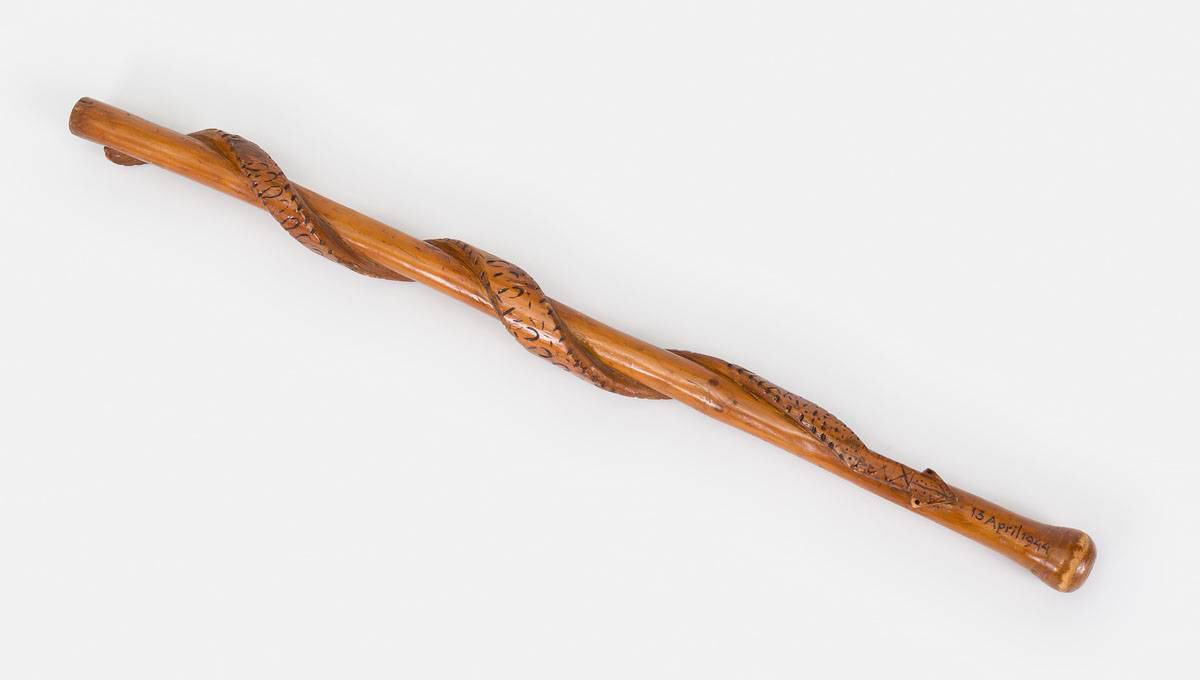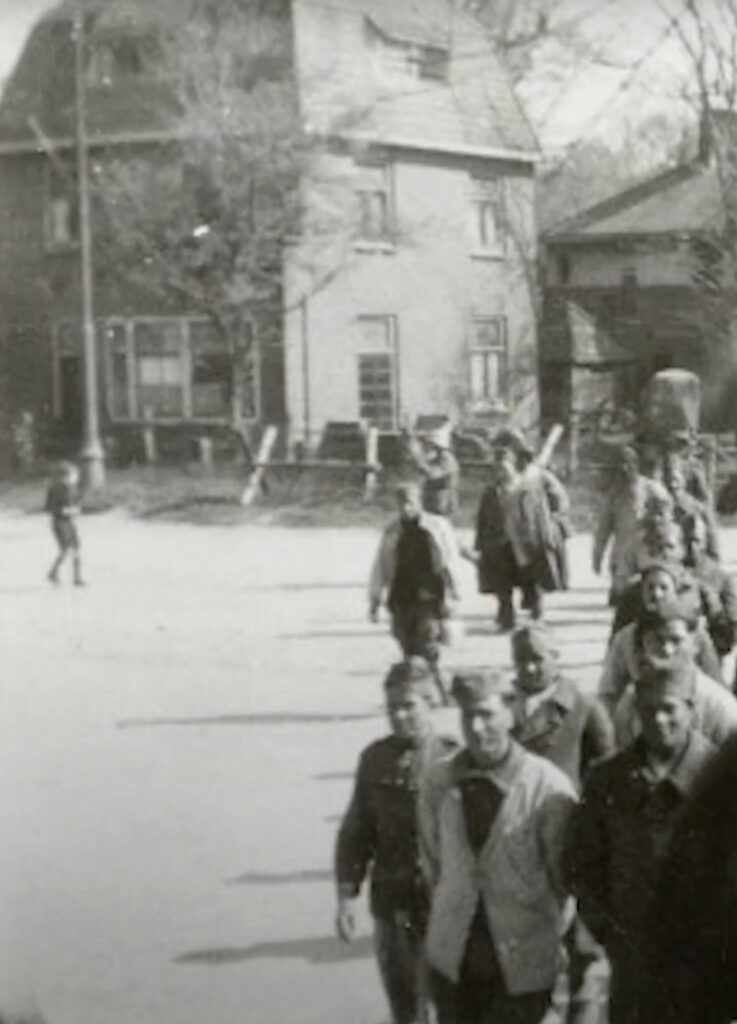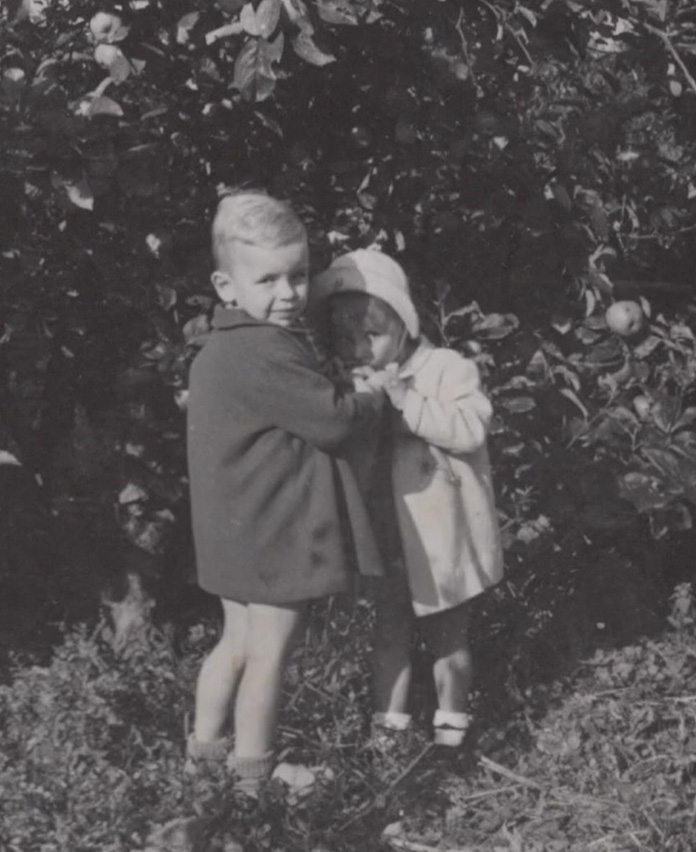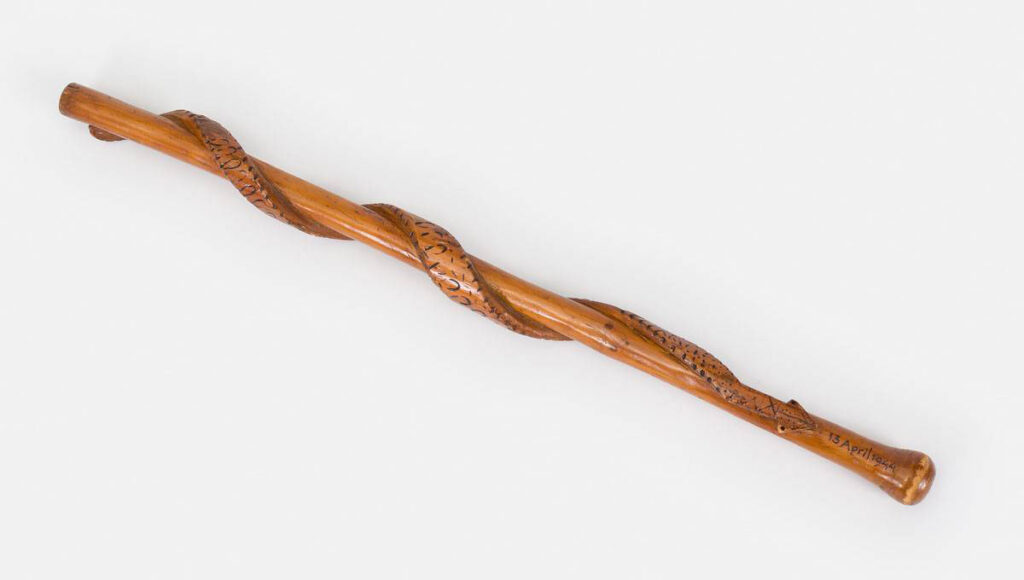No products in the cart.


Object of the Month – October 2025
Moroccan Prisoners of War in Koudekerke
In the summer of 1943, Moroccan prisoners of war suddenly appeared in the village of Koudekerke. These men had fought alongside the French against the German occupiers in 1940 and had been taken captive. Years later, the Germans brought them from other parts of Europe to Zeeland to work as forced laborers on the Atlantic Wall. In Koudekerke, they lived under guard in a camp behind barbed wire – an unfamiliar and striking sight for the local population.
An encounter across the fence
The young Jan Leunis Dop and other village children often went to the camp fence. Using hand gestures and facial expressions, they tried to communicate with the Moroccan men, who did not speak their language but clearly felt their kindness. Sometimes the children passed bits of food through the fence. In return, they received small, handmade gifts. Jan was given a wooden walking stick with a carved snake wrapped around it – a carefully crafted object made with simple tools.
The brief exchanges across the fence were more than childish curiosity. They were quiet acts of humanity in a time of oppression and violence. The Moroccan men were not enemies – on the contrary, they had once been allies, and were now prisoners. For Jan, the carved snake stick became a symbol of that special connection: human to human, across the boundaries of language, origin, and war.


A Tangible Reminder
In the autumn of 1944, the Moroccans disappeared from Koudekerke, just before the liberation of Zeeland began. Jan never saw them again, but the snake stick remained – a tangible reminder of a wartime childhood and an unexpected encounter that left a lasting impression. Today, the stick is part of the collection of the Zeeland Liberation Museum, telling a small, personal story behind a larger history.

